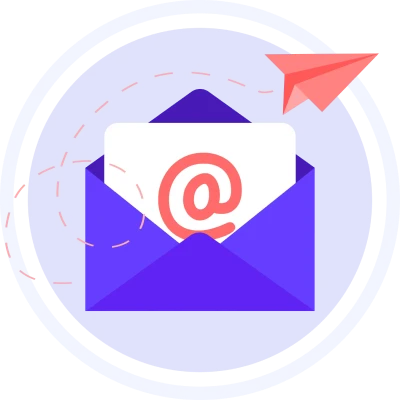


So, you’ve bought your first short-term rental — congrats! But now comes the real work: getting the property ready, creating seamless systems, and delivering 5-star guest experiences consistently.
Whether you’re self-managing or using a co-host or full-service manager, this checklist will help you ensure that nothing slips through the cracks. Let’s break it down into pre-launch setup, ongoing operations, and performance optimization.
🏁 Part 1: Pre-Launch Setup
These are the essentials to nail before your first guest ever walks through the door.
✅ Legal & Compliance
- ☐ Register your business entity (LLC recommended)
- ☐ Apply for local STR permits or licenses
- ☐ Understand city/county zoning rules and occupancy limits
- ☐ Collect and remit local lodging taxes (or work with a service like Avalara)
✅ Financial Systems
- ☐ Open a dedicated STR bank account
- ☐ Set up accounting software (e.g., QuickBooks, Stessa)
- ☐ Track startup costs for tax deduction purposes
- ☐ Hire a tax pro familiar with STR-specific deductions
✅ Insurance
- ☐ Get a short-term rental insurance policy (not just homeowners)
- ☐ Consider umbrella coverage for liability protection
- ☐ Ensure your cleaner/maintenance vendors are insured
✅ Property Prep
- ☐ Deep clean and declutter the entire home
- ☐ Stock essential items (linens, towels, toiletries, kitchen gear)
- ☐ Invest in quality mattresses, pillows, and blackout curtains
- ☐ Install smart locks (Schlage Encode or August), smoke/CO detectors, and fire extinguishers
- ☐ Create a guest manual (digital and printed)
- ☐ Take high-quality photos — ideally by a professional
🛠️ Part 2: Systems and Operations
This is what keeps your property running like a well-oiled machine.
✅ Listing & Booking Setup
- ☐ Create listings on Airbnb, VRBO, and direct booking platforms
- ☐ Sync calendars across all platforms (use a channel manager if needed)
- ☐ Set up dynamic pricing tools (PriceLabs, Wheelhouse, Beyond)
- ☐ Set a minimum and maximum stay policy
- ☐ Write clear house rules and check-in instructions
✅ Guest Communication
- ☐ Pre-booking: Answer questions and screen guests
- ☐ Booking confirmation: Send a welcome message with details
- ☐ Pre-arrival: Send access codes, check-in info, and parking instructions
- ☐ During stay: Be available for questions and maintenance issues
- ☐ Post-checkout: Thank guest and request a review
✅ Cleaning & Turnover
- ☐ Hire a reliable cleaner or team
- ☐ Create a detailed turnover checklist
- ☐ Use turnover scheduling software (Turno, Breezeway)
- ☐ Keep backup linens and consumables stocked
- ☐ Schedule quarterly deep cleans
✅ Maintenance
- ☐ Establish a handyman or maintenance vendor relationship
- ☐ Set up a system for guests or cleaners to report issues
- ☐ Keep basic tools and replacement items on-site
- ☐ Schedule preventative maintenance monthly or quarterly
✅ Inventory Management
- ☐ Create a replenishment list (toilet paper, soap, K-cups, etc.)
- ☐ Do a monthly restock run or schedule delivery
- ☐ Track items prone to breakage or theft (wine glasses, remotes)
📈 Part 3: Optimization & Growth
Once the basics are humming, it’s time to go from good to great.
✅ Guest Experience
- ☐ Offer local recommendations via guidebook or QR code
- ☐ Include a welcome gift or personalized note
- ☐ Respond to guest messages within 1 hour
- ☐ Proactively solve problems before they escalate
✅ Review Management
- ☐ Monitor all reviews and guest feedback
- ☐ Respond to every review (positive and negative)
- ☐ Implement changes based on consistent themes
✅ Revenue Management
- ☐ Adjust pricing seasonally and for local events
- ☐ Track occupancy, average daily rate (ADR), and RevPAR
- ☐ Experiment with discounts for longer stays, last-minute bookings, etc.
- ☐ Monitor competitors’ performance in your area
✅ Cleaning and Quality Audits
- ☐ Conduct random inspections monthly
- ☐ Review photo evidence from cleaning teams (if remote)
- ☐ Score your cleans and re-train as needed
- ☐ Offer bonuses for consistent quality
✅ Technology Upgrades
- ☐ Add a Ring camera (at front door only)
- ☐ Use noise monitoring tools (Minut, NoiseAware)
- ☐ Set up smart thermostats (Nest, Ecobee)
- ☐ Automate guest messaging via property management system (PMS)
🧠 Bonus: Create a “Property Binder”
For in-person teams, a physical binder with:
- Home systems instructions (WiFi, thermostat, fuse box)
- Cleaning checklist
- Local emergency contacts
- Troubleshooting guide (TV, HVAC, water shutoff)
It reduces calls and keeps your property functioning smoothly.
🧮 Metrics to Track from Day One
| Metric | Why It Matters |
| Occupancy Rate | Measures how often your home is booked |
| Average Daily Rate | Helps you understand pricing health |
| RevPAR | Total revenue divided by total nights |
| 5-Star % | Guest satisfaction and future booking impact |
| Response Time | Platform ranking + guest experience |
| Cleaning Issues Rate | Quality control + guest experience |
💬 Final Thoughts
Managing a short-term rental is like running a boutique hotel — with all the moving parts and none of the staff unless you build the system. This checklist helps you stay organized, proactive, and focused on what really matters: guest experience, operational excellence, and profitability.
Starting off strong now means fewer headaches (and higher returns) later.
DealRoom Team
Deal Room is your trusted source for smart, actionable insights in rental property investment and management. From financing and tax strategies to design and operations, we help landlords and investors make confident, informed decisions.
Dive Deeper
 Management Models & StrategiesChoosing a property manager is one of the most critical decisions an STR investor will make. A great manager will elevate your property, protect...August 10, 20254 minutes
Management Models & StrategiesChoosing a property manager is one of the most critical decisions an STR investor will make. A great manager will elevate your property, protect...August 10, 20254 minutes Management Models & Strategies
Management Models & StrategiesWhat’s Right for Your STR Investment? – Self-Manage vs. Full-Service
When you're just starting with short-term rentals, one of the biggest decisions you'll make is how to manage the property. Should you take on...August 10, 20255 minutes Rental Pricing Strategies
Rental Pricing StrategiesPriceLabs Report: London Holiday Let Prices Surge 17% Despite Fewer Bookings
August 10, 20250 minutes Management Models & Strategies
Management Models & StrategiesFlorida-based Property Manager Files for Bankruptcy
August 10, 20250 minutes



